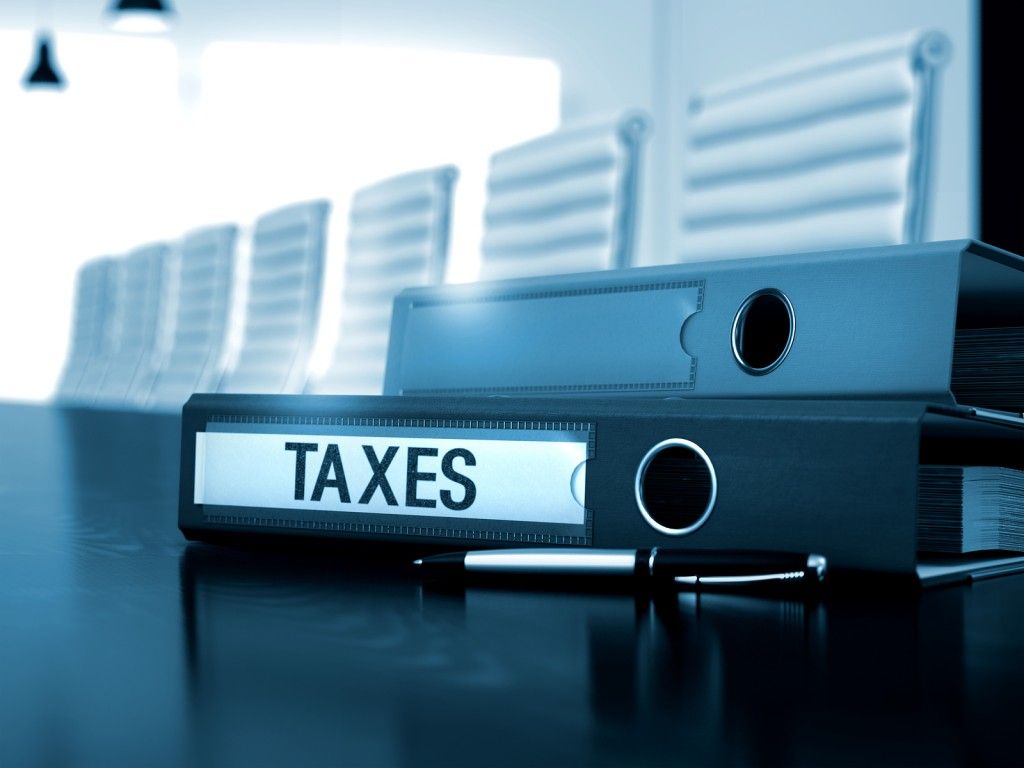Can we predict a company’s effective tax rates? Estimating corporation tax rates is required for forecasting income taxes on operational profit, computing the aftertax cost of capital, estimating the income tax consequences of nonoperating and transitory items, and assessing anomalous income tax expenses in financial statement analysis and valuation. Forecasting, valuation, and earnings quality analysis, among other things, necessitate firm-specific “normal tax rate” estimates. These estimates can be calculated using the reported effective tax rate, the statutory tax rate, or other disclosures such as components of income tax expenses, taxes actually paid, domestic versus foreign earnings and effective tax rates, deferred tax assets and liabilities, and non-GAAP measures and reconciliation.
But what is the typical tax rate for a foreign multinational corporation with subsidiaries all over the world? From a U.S. tax law point of view, corporations are subject to both a normal tax and a surtax calculated on the corporation’s taxable income for the taxable year.
Today, the normal corporate tax is imposed at a statutory rate of 21% and is applied to taxable income for the taxable year. However, using the top statutory tax rate approach to calculate corporate tax rates has a number of drawbacks. First, many businesses have multiple tax jurisdictions with varying tax rates. Second, some tax jurisdictions have multiple tax levels (for example, in the U.S. there are federal, state, and local). Third, different income levels may have an impact on tax rates. Fourth, because of discounting and cash flow effects, the economic tax rate on pretax book income (relative to the statutory rate) changes due to timing and permanent differences between pretax book income and taxable income. Because of these differences, most corporations pay far less than the statutory rate. Various research studies have found that the statutory tax rate distorts corporate tax rate predictions due to after-tax special items such as restructuring charges and asset write-downs.
Accounting-wise, normal tax rate is the effective tax rate of the company if there were no transitory impacts. It can be calculated using the effective tax rate, the statutory tax rate, reconciliation data, or additional disclosures. Effective tax rate is the income tax expense to pretax income ratio, which measures the current, past, and future tax implications of presently reported pretax income, regardless of when tax payments are made. As a result, it should more accurately reflect the “true” tax rate than cash-based measures, just as earnings provide a more complete measure of profitability than operating cash flow.
However, the effective tax rate is frequently unpredictable, making it an inadequate indicator of future tax rates. It may contain transitory or highly volatile components such as the impact of changes in tax reserves (unrecognized tax benefits), unreserved prior period tax payments, changes in the tax valuation allowance or unrecognized deferred tax assets, changes in tax rates or tax laws, and stock-based compensation excess tax benefits. Although averaging the effective tax rate over several years can reduce transient effects, time series variance may still exist due to changes in statutory tax rates, income mix trends, or other factors that may persist. Furthermore, pretax income may include nontaxable transitory items such as goodwill impairment, fines, and some insurance proceeds, which change pretax income but not income tax expense, resulting in transitory effective tax rate effects. Finally, if different sources of income have different tax rates (for example, by jurisdiction or type of income), the income mix may temporarily change the effective tax rate.
Is tax reconciliation the solution? Not exactly. The income tax reconciliation can inform us about recurring (or normal) tax rate, transitory component of the income tax expense, earnings management, and tax rates on different types of income (for example, operating versus financing, recurring versus transitory, domestic versus foreign, R&D-related, and labor-related). However, there are several drawbacks to using tax reconciliation to estimate tax rates. First, companies do not explicitly report all reconciling items, instead including immaterial ones in the “other” category. Second, because companies have some leeway in determining materiality, not all significant items are explicitly reported. Furthermore, due to technique differences, stated results may not be comparable across firms or over time. A corporation, for example, may include the impact of a change in the tax valuation allowance relating to international activities in the “foreign taxes” reconciling item or the valuation allowance impact. This adaptability enables businesses to include immaterial effects in the “other” category and use their reporting discretion to provide incomplete information or reduce transparency. Furthermore, items that are supposed to be transient may persist. Corporations may postpone recognizing some unrecognized tax benefits in order to avoid IRS scrutiny. Finally, CompStat and other traditional data providers/aggregators do not provide accurate tax reconciliation information.
As a result, there is a need to adjust for firms’ tax-related information that they provide in order to more accurately estimate the typical tax rate, detect transitory effective tax rate components, or predict effective tax rate changes. This information includes valuation allowance levels and changes, as well as the portion recognized in income; pretax income and taxes for domestic and foreign activities; current versus deferred income tax expense, income taxes paid during the period, and deferred tax asset and liability components; management discussion and analysis and non-GAAP information; and deferred tax assets and liabilities, as well as transitory variances.
This paper does that by developing an algorithm that combines various techniques and incorporates additional firm information to estimate the corporation’s normal tax rate—the effective tax rate the corporation would have reported if transitory effects did not exist. It calculates the statutory tax rate using the OECD’s combined statutory corporate income tax rate, which indicates the net effect of all taxing layers in countries with multiple layers, such as the U.S. and Germany. The combined tax rate for corporations in the U.S. includes federal, state, and municipal taxes, minus the federal deductibility of state and local taxes by weighting the rates on business income. If a company earns significant income abroad or if the average state tax rate in the states where it operates differs significantly from the national average, its average statutory tax rate may vary. As a result, using the algorithm for normal tax rate estimation is critical to reducing measurement inaccuracy. To improve forecast accuracy for foreign companies, the U.S. average is used with a country-of-incorporation adjustment. Because transitory tax adjustments (e.g., unrecognized tax benefits) affect effective tax rate (the ratio of income taxes to pretax revenue) over time and across enterprises, nontaxable income components such as interest on tax-exempt securities and the majority of goodwill impairment impact are adjusted using a ratio of adjusted income taxes to adjusted pretax income. The algorithm also takes into account dividend received deduction (for U.S. investors), designation of earnings as permanently reinvested (less important after the TCJA but still relevant), overseas tax credits, goodwill adjustments, equity method income, and territorial taxation.
Following the development of the algorithm, the paper presents an empirical analysis demonstrating that normal tax rates calculated using this algorithm can accurately predict the effective tax rate over the near-to-intermediate term (one to seven years ahead) and assist in identifying the transitory component of reported income taxes. For the fiscal years 1989-2022, the paper employs the Compustat North America Fundamental Annual file for firms with annual revenue of more than $100 million in December 2022 prices. The majority of companies in that sample—85.9% of observations—are incorporated in the United States. Both the normal tax rate and the effective tax rate are approximately 1%-2% points lower than the median statutory tax rates for most corporations. When comparing medians or means, the differences are much larger—about 7% points, or one-fifth of the total statutory tax rate. These findings, which are influenced by a number of factors, highlight the limitations of using statutory tax rates as a proxy for corporate tax rates. Furthermore, the study shows that normal tax rates differ significantly from effective tax rates due to algorithm measurement corrections. When the prediction abilities of the three tax rates are compared, moving from effective tax rates to normal tax rates improves the informativeness of effective tax rate values in the middle of the distribution. The results also show that the normal tax rate model captures almost all effective tax rate information and forecasts better than the effective tax rate itself. It can assist in identifying transient income taxes and determining earnings sustainability. Because it avoids tax rate volatility and uncertainty, it significantly improves the current best available forecast.
This important normal tax rate model developed in this paper advances us further toward accurate forecasts of near-to-intermediate effective tax rates and identifies transitory components based on effective tax reconciliations and other data, including non-GAAP disclosures. While tax rates on operating profit and weighted average cost of capital are likely to differ from this estimate (and from each other), normal tax rates provide relevant information for estimating these tax rates as well by removing transitory effects. Adjustments to the effective tax rate and CompStat data have reduced volatility and measurement errors in recent years, making the normal tax rate the most informative. By generating accurate tax rate estimations for fundamental corporate tax analysis, the findings and methodology of this study can be used to predict recurring earnings, assess earnings quality, improve quant-type analysis, and advance academic research on tax rate predictions.
https://taxprof.typepad.com/taxprof_blog/2023/08/weekly-ssrn-tax-article-review-and-roundup-eyal-cohen-reviews-nissims-normal-tax-rate-.html




